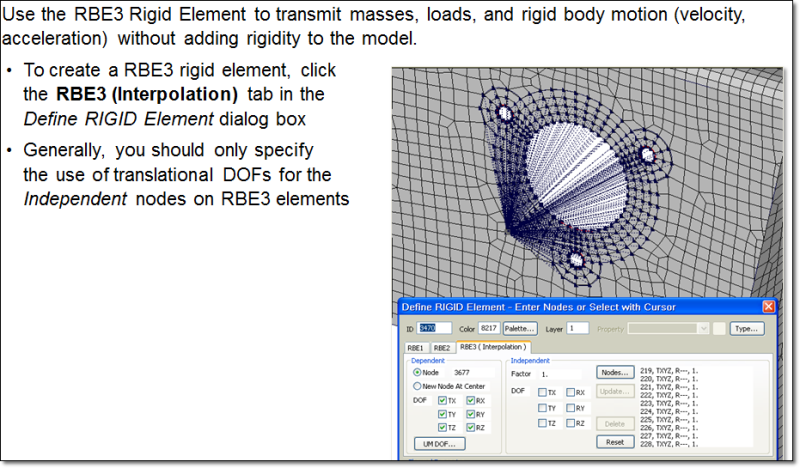Assume you have a plate with a rigid box attached to it by 4 screws. Using the location of center of mass of the box you place a node or 0d mass there, apply a load or other applied forces (direction doesnt matter). Would you use an rbe2 or rbe3 from the cg to the bolts?
Tek-Tips is the largest IT community on the Internet today!
Members share and learn making Tek-Tips Forums the best source of peer-reviewed technical information on the Internet!
-
Congratulations MintJulep on being selected by the Eng-Tips community for having the most helpful posts in the forums last week. Way to Go!
RBE2 or RBE3 for this application? 2
- Thread starter MrK159
- Start date

